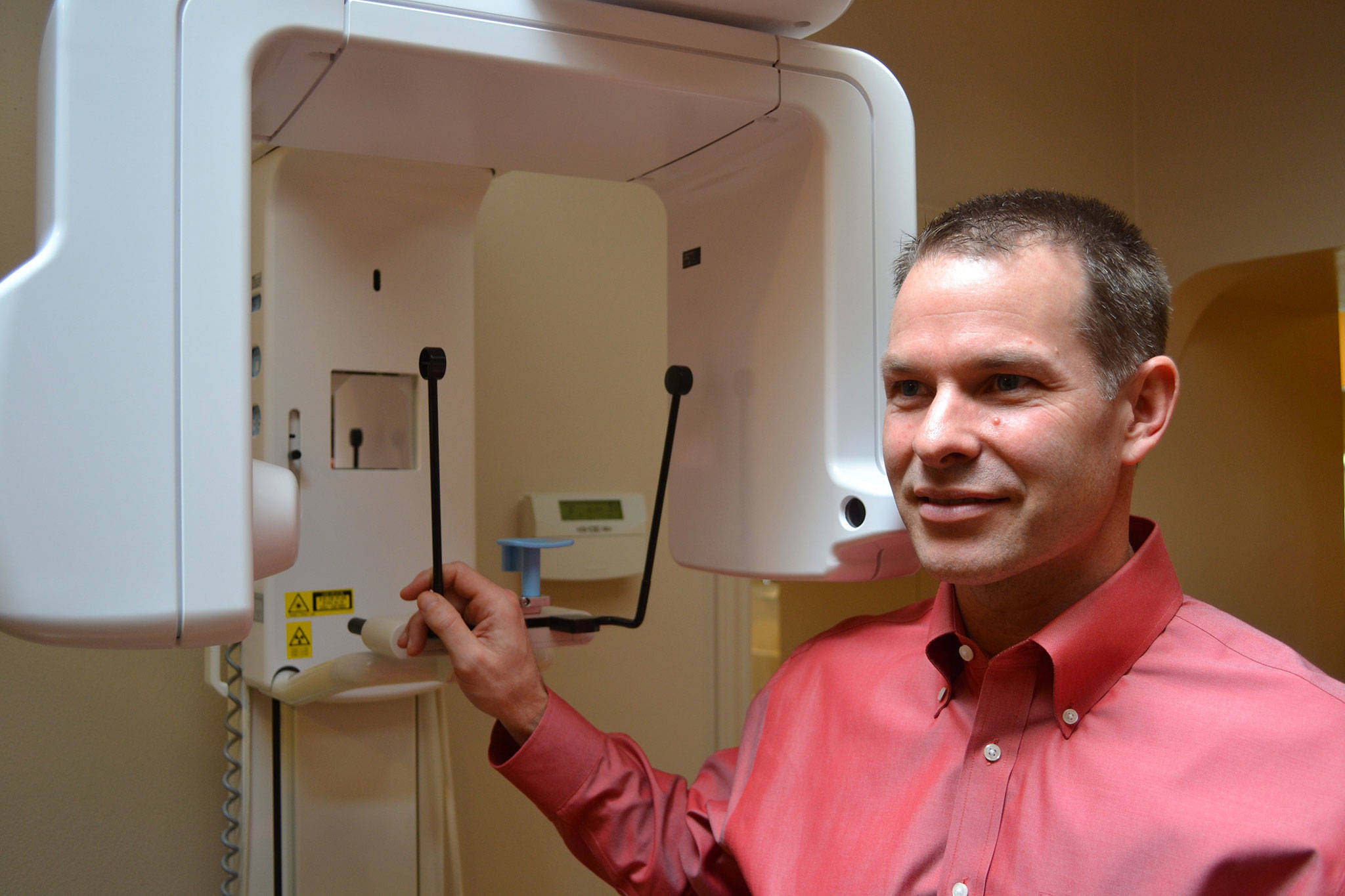MARYSVILLE – No pain no gain doesn’t cut it in the world of dentistry.
Limiting pain as much as possible is how they stay in business.
Dr. Scott Stayner has been a dentist in Marysville since 1997. He was born and raised here, going to the University of Washington after graduating from Marysville-Pilchuck High School. Nationwide statistics show 40 percent of those 18 and older don’t go to a dentist every year. The recommendation is twice a year. The main reason, Staynor said, “Fear.”
“With the fear of dental pain, they put it off and are in more pain” by not having the problem fixed, he said.
“They also fear what might be in there,” he added, referring to the possibility of severe dental issues.
Other main reasons for not going to a dentist include lack of insurance (cost) and too busy (low in priority).
He said 90 percent of the time there are two reasons for fear: a bad childhood or military experience.
Stayner said dentists are more sensitive to patient fears. He even attended a fear clinic at the UW.
“There’s more emphasis on recognizing fear,” he said. “It’s more gentle dentistry, rather than get-it-done dentistry.”
Progress in technology also limits pain. Local anesthesia is so much better than in the past.
Stayner said if someone doesn’t get numb, which happens rarely, he will send the patient home. “I won’t create fears,” he said, adding when they come back it usually will work the second time. With digital x-rays, that process is more comfortable, too, and fewer retakes are needed.
Going to the dentist also isn’t as time consuming as it once was. Since it’s his own business, Stayner makes sure patients are in and out as quickly as possible as he respects people’s time.
Electronic tools make fixing cavities faster. Composite fillings take three seconds to set, where it used to take 40.
Even extensive work, such as a root canal, used to take up to four appointments. Now it can be done in one.
Wisdom teeth are still an issue for many people. He recommends getting them pulled from ages 16-24. “But for some lucky people they are normal teeth and never have to come out,” Stayner said.
Other issues include teeth grinding, causing sore jaw and headaches; broken teeth; gum disease and abcesses.
Seeing a dentist also is important for overall health.
A dentist might be the first one to spot signs of mouth cancer. Bad gums could be a sign of heart disease.
“Healthy gums, healthy heart” is a big push, he said.


